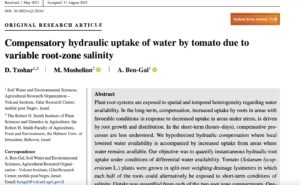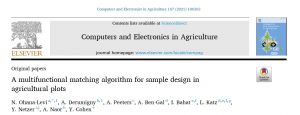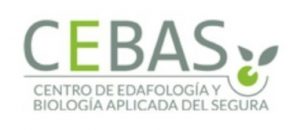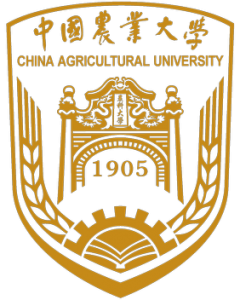In “Soil and Tillage Research”
Authors: M.López-Vicente, J.A.Gómez, G.Guzmán, J.Calero, R.García-Ruiz
Authors: M.López-Vicente, J.A.Gómez, G.Guzmán, J.Calero, R.García-Ruiz
Authors: Jakub Jeřábek, David Zumr
Authors: J.M.Ramírez-Cuesta, M.Minacapilli, A.Motisi, S.Consoli, D.S.Intrigliolo, D.Vanella
The identification and recognition of the land processes are of vital importance for a proper management of the ecosystem functions and services. However, on-ground land uses/land covers (LULC) characterization is a time-consuming task, often limited to small land areas, which can be solved using remote sensing technologies. The objective of this work is to investigate how the different MODIS NDVI seasonal parameters responded to the main land processes observed in Europe in the 2000-2018 period; characterizing their temporal trend; and evaluating which one reflected better each specific land process. NDVI time-series were evaluated using TIMESAT software, which extracted eight seasonality parameters: amplitude, base value, length of season, maximum value, left and right derivative values and small and large integrated values. These parameters were correlated with the LULC changes derived from COoRdination of INformation on the Environment Land Cover (CLC) for assessing which parameter better characterized each land process. The temporal evolution of the maximum seasonal NDVI was the parameter that better characterized the occurrence of most of the land processes evaluated (afforestation, agriculturalization, degradation, land abandonment, land restoration, urbanization; R2 from 0.67-0.97). Large integrated value also presented significant relationships but they were restricted to two of the three evaluated periods. On the contrary, land processes involving CLC categories with similar NDVI patterns were not well captured with the proposed methodology. These results evidenced that this methodology could be combined with other classification methods for improving LULC identification accuracy or for identifying LULC processes in locations where no LULC maps are available. Such information can be used by policy-makers to draw LULC management actions associated with sustainable development goals. This is especially relevant for areas where food security is at stake and where terrestrial ecosystems are threatened by severe biodiversity loss.
Read the paper here.
Authors: Barlin O.Olivares, JulioCalero, Juan C.Rey, Deyanira Lobo, Blanca B.Landa, José A.Gómez
Soil morphological properties described in the field, such as texture, consistence or structure, provide a valuable tool for the evaluation of soil productivity potential. In this study, we developed a regression model between the soil morphological variables of banana plantations and a crop Productivity Index (PI) previously developed for the same areas in Venezuela. For this, we implemented categorical regression, an optimal scaling procedure in which the morphological variables are transformed into a numerical scale, and can thus be entered in a multiple regression analysis. The model was developed from data from six plantations growing “Gran Nain” bananas, each with two productivity levels (high and low), in two 4-ha experimental plots, one for each productivity level. Sixty-three A horizons in thirty-six soils were described using 15 field morphological variables on a nominal scale for structure type, texture and hue, and an ordinal scale for the rest (structure grade, structure size, wet and dry consistence, stickiness, plasticity, moist value, chroma, root abundance, root size, biological activity and reaction to HCl). The optimum model selected included biological activity, texture, dry consistence, reaction to HCl and structure type variables. These variables explained the PI with an R2 of 0.599, an expected prediction error (EPE) of 0.645 and a standard error (SE) of 0.135 using bootstrapping, and EPE of 0.662 with a SE of 0.236 using 10-fold cross validation. Our study showed how soil quality is clearly related to productivity on commercial banana plantations, and developed a way to correlate soil quality indicators to yield by using indicators based on easily measured soil morphological parameters. The methodology used in this study might be further expanded to other banana-producing areas to help identify the soils most suitable for its cultivation, thereby enhancing its environmental sustainability and profitability.
Read the paper here.

Authors: D. Tzohar, M. Moshelion, A. Ben-Gal
Plant root systems are exposed to spatial and temporal heterogeneity regarding water availability. In the long-term, compensation, increased uptake by roots in areas with favorable conditions in response to decreased uptake in areas under stress, is driven by root growth and distribution. In the short-term (hours–days), compensative processes are less understood. We hypothesized hydraulic compensation where local lowered water availability is accompanied by increased uptake from areas where water remains available. Our objective was to quantify instantaneous hydraulic root uptake under conditions of differential water availability. Tomato (Solanum lycopersicum L.) plants were grown in split-root weighing-drainage lysimeters in which each half of the roots could alternatively be exposed to short-term conditions of salinity. Uptake was quantified from each of the two root zone compartments. One-sided exposure to salinity immediately led to less uptake from the salt-affected compartment and increased uptake from the nontreated compartment. Compensation occurred at salinity, caused by NaCl solution of 4 dS m−1, that did not decrease uptake in plants with entire root systems exposed. At higher salinity, 6.44 dS m−1, transpiration decreased by ∼50% when the total root system was exposed. When only half of the roots were exposed, total uptake was maintained at levels of nonstressed plants with as much as 85% occurring from the nontreated compartment. The extent of compensation was not absolute and apparently a function of salinity, atmospheric demand, and duration of exposure. As long as there is no hydraulic restriction in other areas, temporary reduction in water availability in some parts of a tomato’s root zone will not affect plant-scale transpiration.

N.Ohana-Levia1A.Derumignyb1A.PeeterscA.Ben-GaldI.BahatefL.KatzdefgY.NetzerijA.NaorhY.Cohene
Computers and Electronics in Agriculture https://doi.org/10.1016/j.compag.2021.106262
Collection of accurate and representative data from agricultural fields is required for efficient crop management. Since growers have limited available resources, there is a need for advanced methods to select representative points within a field in order to best satisfy sampling or sensing objectives. The main purpose of this work was to develop a data-driven method for selecting locations across an agricultural field given observations of some covariates at every point in the field. These chosen locations should be representative of the distribution of the covariates in the entire population and represent the spatial variability in the field. They can then be used to sample an unknown target feature whose sampling is expensive and cannot be realistically done at the population scale.
An algorithm for determining these optimal sampling locations, namely the multifunctional matching (MFM) criterion, was based on matching of moments (functionals) between sample and population. The selected functionals in this study were standard deviation, mean, and Kendall’s tau. An additional algorithm defined the minimal number of observations that could represent the population according to a desired level of accuracy. The MFM was applied to datasets from two agricultural plots: a vineyard and a peach orchard. The data from the plots included measured values of slope, topographic wetness index, normalized difference vegetation index, and apparent soil electrical conductivity. The MFM algorithm selected the number of sampling points according to a representation accuracy of 90% and determined the optimal location of these points. The algorithm was validated against values of vine or tree water status measured as crop water stress index (CWSI). Algorithm performance was then compared to two other sampling methods: the conditioned Latin hypercube sampling (cLHS) model and a uniform random sample with spatial constraints. Comparison among sampling methods was based on measures of similarity between the target variable population distribution and the distribution of the selected sample.
MFM represented CWSI distribution better than the cLHS and the uniform random sampling, and the selected locations showed smaller deviations from the mean and standard deviation of the entire population. The MFM functioned better in the vineyard, where spatial variability was larger than in the orchard. In both plots, the spatial pattern of the selected samples captured the spatial variability of CWSI. MFM can be adjusted and applied using other moments/functionals and may be adopted by other disciplines, particularly in cases where small sample sizes are desired. View Full-Text
Keywords: Partially-observed data, Representative sampling given covariates, Two-phase study, Agricultural sampling, Spatial autocorrelation

A. Tallou 1, F. Aziz 2,A. J. Garcia 3, F. P. Salcedo 3, F. E. El Minaoui 1 & S. Amir 1
1 Polydisciplinary Laboratory of Research and development, Faculty of Sciences and Techniques, Sultan Moulay Slimane University of Beni Mellal, Beni Mellal, Morocco
2 Laboratory of Water, Biodiversity & Climate Change, Semlalia Faculty of Sciences, University Cadi Ayyad, B.P. 2390, 40000, Marrakech, Morocco
3 Department of Irrigation, CEBAS-CSIC, Campus Universitario de Espinardo, 30100, Murcia, Spain
International Journal of Environmental Science and Technology (2021)
Tomatoes (Solanum lycopersicum) plant were provided with bio-fertilizers issued from anaerobic digestion of olive mill wastewater without and with 1%, 5% of phosphate residues in mesophilic conditions for 25 days. 1% of raw substrates (OMW raw; OMW + 1%PR raw; olive mill wastewater + 5%phosphate residues raw; and phosphate residues) and digestates (olive mill wastewater digestate, olive mill wastewater + 1%phosphate residues digestate and olive mill wastewater + 5%phosphate residues digestate) was provided fortnightly to the plants. Reclaimed water from a wastewater treatment plant located in the study site was used for automatically controlled irrigation. It contained a low level of chemical fertilizers to compare tomato plant growth, leaf analysis, steam water potential, production yield and fruit quality results to plants fed with bio-fertilizers. Generally, parameters and results were progressively increased during the growing and harvesting stage, which refer to the essential elements that cover the plant’s needs. Plants fed with bio-fertilizers showed the most extended plant height (olive mill wastewater + 5% phosphate residues raw), and the best accumulation of essential elements in leaves (olive mill wastewater + 1% phosphate residues digestate and olive mill wastewater + 5%phosphate residues digestate). The maximum average fruit weight per treatment (35.5 g) was obtained when applying the digestates mixture of olive mill wastewater raw and olive mill wastewater + 5% phosphate residues. The maximum yield production per plant was obtained when applying phosphates residues. Bio-fertilizers (digestates) showed good performances, high fruit quality and perfect tomato yield production compared to the control plants. Results obtained during this study are considered promising regarding environmental framework. However, this study was done in a laboratory scale and needs to be applied in a large scale to provide more data on the effectiveness of the digestates application. It is also recommended to apply these bio-fertilizers on different crops and various soils for a better evaluation.

Received 20 October 2020, Revised 4 March 2021, Accepted 7 March 2021, Available online 18 March 2021.
Stomatal conductance, closely related to water flow in the soil-plant-atmosphere continuum, is an important parameter in the Penman-Monteith (P-M) model for estimating evapotranspiration (ET). In this study, a novel soil water stress index ω, considering intrinsic soil-plant water relations, was introduced into the Jarvis empirical estimation model of stomatal conductance to improve the representation of the effect of soil water stress on stomatal conductance. The index ω accounted not only for current water availability by combing the effects of relative distribution of soil water to roots and nonlinear stomatal response, but also for the hysteresis effect of water stress by means of the inclusion of a recovery coefficient. Combined plant and soil-based measurements from a greenhouse experiment provided the basis for investigating the relationship between leaf stomatal conductance gs and root zone soil water stress represented by ω. The response of gs to root-weighted soil matric potential was found to be nonlinear. The relationship between gs and the extent of previous water stress (i.e. the water stress recovery coefficient curve) was generalized by a power function and was verified and confirmed using results obtained from the literature. The reliability of ω was tested by coupling it into the Jarvis model to estimate leaf (gs) and canopy (gc) stomatal conductance, and thereupon into the P-M model to estimate cumulative ET (CET) in the greenhouse experiment and two field experiments. The estimated gs, gc and CET agreed well with the measurements, with root mean squared error not more than 0.0006 m s−1, 0.0020 m s−1 and 8.2 mm, respectively, and determination coefficient (Nash-Sutcliffe efficiency coefficient) consistently greater than 65% (0.14). Therefore, ω should be feasible and reliable to delineate the response of stomatal physiological reaction to water stress, and hence helpful for accurate estimation of ET using Jarvis-based P-M models.

Tomás R. Tenreiroa Margarita García-Vilab José A. Gómeza José A. Jiménez-Bernia Elías Fereresab
The fraction of green canopy cover (CC) is an important feature commonly used to characterize crop growth and for calibration of crop and hydrological models. It is well accepted that there is a relation between CC and NDVI through linear or quadratic models, however a straight-forward empirical approach, to derive CC from NDVI observations, is still lacking. In this study, we conducted a meta-analysis of the NDVI-CC relationships with data collected from 19 different studies (N = 1397). Generic models are proposed here for 13 different agricultural crops, and the associated degree of uncertainty, together with the magnitude of error were quantified for each model (RMSE around 6–18% of CC). We observed that correlations are adequate for the majority of crops as